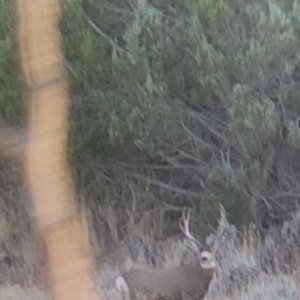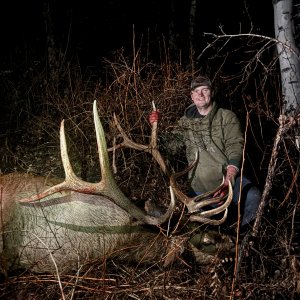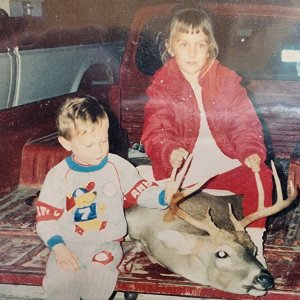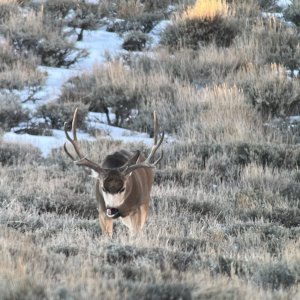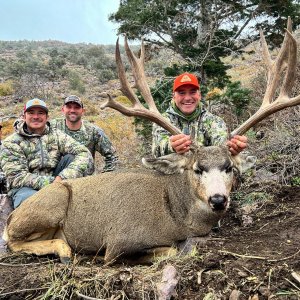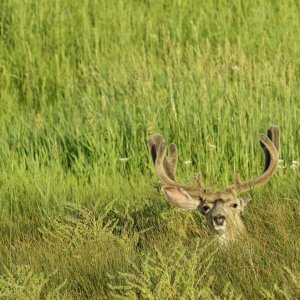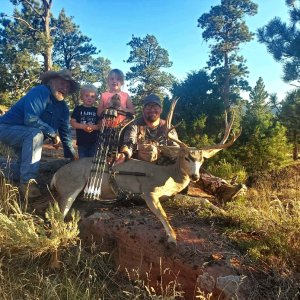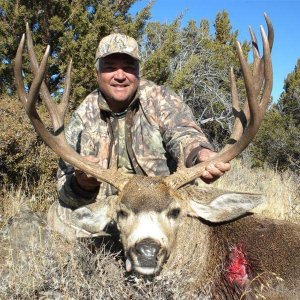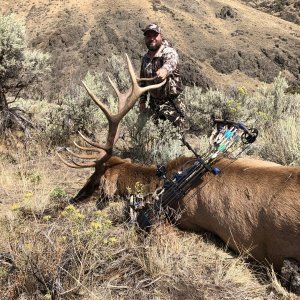Here is a study on YNP Elk pre & post wolf introduction. Again, reference the elk habitat info I posted above to see why climate change(drought or severe winter) can hurt our game populations. Now add in a new predator(wolves) with cougars, bears, coyotes and you will see a decline of elk like in YNP. It is a combo of issues causing the YNP elk to decline.
Influence of Harvest, Climate, and Wolf Predation on YNP Elk, 1961-2004
The influence of predation on prey population dynamics is varied and complex. Meta-analysis of controlled experiments suggests that predation sometimes, but not always, results in a trophic cascade (Schmitz et al. 2000). Nonexperimental introductions of carnivores appear to be associated with prey declines in about half the cases (Ebenhard 1988). The influence of predation is also suggested by the tendency for prey populations to exist at lower densities when exposed to predator communities with increased species richness (Peterson 2001, Mech and Peterson 2002). However, the widespread tendency for carnivore and prey populations to be positive correlated (over time and across space, Fuller and Sievert 2001), may indicate that predator equilibria are importantly determined by prey equilibria, rather than the reverse.
Elk have been counted by aerial survey during most years between 1961 and 2004 (Table 1). The methods are described and data presented in Taper and Gogan (2002) and in Lemke et al. (1998). Data since 1995 were obtained from annual reports of the elk count and elk harvest (Montana Fish Wildlife and Parks 2004). Each year elk are counted in December or early January. Since 1976, this elk population has been harvested during four separate annual hunts that take place just north of Yellowstone Park. Three hunts, known as general season hunts, focus on bulls and occur each autumn. The other hunt, known as the late season hunt, focuses on antlerless elk and occurs during January and February. We calculated a pre-harvest count (NJ) by adding, to the count, the number harvested prior to the count. We calculated two harvest statistics. One included the total number of elk harvested each season (THt). The other excluded elk killed during the fall hunt, which may have less impact on population dynamics because it removes a small portion of the population (2.8% on average) and consists primarily of bulls. This harvest primarily represents the elk harvest during the late hunt, which occurs during February and March. We denote this statistic as LHt. In each case, we calculated harvest rate (THt and LHJ) as the number of elk harvested divided by Nt. From successive annual values of Nt, we estimated annual population growth rate for year t as rt =ln(Nt+ 1) -ln(Nt).
We used weather data collected from the Mammoth weather station, which is located on the Northern Range. Specifically, we used mean daily maximum temperature during summer (June-August), mean daily minimum temperature during winter (January-February), cumulative snowfall (October-April, St), annual precipitation (November-October, Pt), and summer precipitation (July) (Table 1). We considered summer precipitation separately because elk may be especially limited by the nutritive quality of summer forage (Merrill and Boyce 1991, Cook et al. 2004). Importantly, summer precipita-tion and annual precipitation are not well correlated (R =0.15, p =0.35). We also used an index of snow water equivalent (i.e. water content of the snow) measured four times during each winter (1 Jan, 1 Feb, 1 Mar and 1 April). Snow water equivalent may indicate winter severity or drought stress. These data were measured in the Northern Range near Lupine Creek and were obtained from Farnes (1996) and P. Farnes and C. Hayden (pers. comm.).
Harvest rate (excluding the fall harvest) appears as a predictor variable in each model (Table 3). The contribution of harvest rate to explaining the variation in elk growth rate can be estimated by multiplying the standardized regression coefficient for harvest times that correlation coefficient between LHt and rt (Schumacker and Lomax 1996). We calculated this statistic for each of the four best models, and calculated an average contribution of LHt, weighted by each model's AICc weight. According to this calculation, harvest rate accounts for 47% of the observed annual variation in elk population growth rate for the period 1961-1995.
The 95% confidence interval for aH is [-2.1, -0.32], the 80% confidence interval for XH is [-2.0, -0.72], and the 50% confidence interval for OCH is [-1.8, -1.2]. The apparent super-additivity of the harvest may be ex- plained by the fact that most elk (70%) taken in the harvest were pregnant (Lemke 2003).
We projected growth rates and abundances from 1995- 2004 on the basis of the best performing models in Table 3. These predictions were calculated as:
rt=f(Nt, Ht. Cd)fort= 1995 (la) rt = f(Nt, Ht. Ct) for t > 1995 (lb)
where f( represents one of the models in Table 3, Ct represents a set of climate variables corresponding to one of the models in Table 3, and &t =exp(ln(N* 1)+rt), where N.1 =17290 for t-1 =1995 (Table 1) or N = Nt_ 1 for t -I> 1995. Projected values of elk abundance tend to decline from 1995 to 2004 for each of the models that performed reasonably well (Fig. 3).
For additional context, it is useful to recognize that: 1) northern Yellowstone elk are distinctive because they are preyed upon by more predator species than most other elk populations (i.e. humans, wolves, coyotes, cougars, black bears, and grizzly bears; Smith et al. 2003); and 2) since the mid-1980s the abundance of cougars and grizzly bears has also increased (Murphy 1998, Schwartz and Haroldson 2003).
Our analysis suggests that human harvest may have been super-additive. That is, for every one percent increase in harvest rate the population growth rate declines by more than one percent (i.e. 1.55 with 80% confidence intervals of [-2.0%, -0.7%]). This could reflect both direct and indirect effects of harvest. Alternatively, harvest rates could be correlated with some factor that also tends to reduce population growth rate. Perhaps, for example, harvest and winter severity each reduce population growth rate, and harvest rates tends to be greater in more severe winters. This is plausible because elk mobility is more restricted during sever winters and more easily found by hunters. This possibility is further supported by the positive correlation between cumulative annual snowfall and the late harvest rate (LHt; R =0.48, p =0.01). This correlation does not however imply that the effect of harvest is misconstrued for what is really the effect of cumulative annual snow. This is so because the best performing model (Table 3) with elk density, snow, precipitation, and harvest performs much better compared to the model with only elk density, snow, and precipitation (i.e. R2= 0.08, AAICc = 17). Models with an interaction term for harvest and snow did not outperform models without this interaction term. More generally, it is not surprising that human harvest would be more additive than wolf predation, because whereas wolves are highly selective for elk in vulnerable age classes, human hunters show no such selection and are more likely to kill prime-aged elk (Wright 2003).
Great value seems to be placed on considering the northern Yellowstone elk herd to be naturally regulated (Coughenhour and Singer 1996, Singer et al. 1998, Huff and Varley 1999, National Research Council 2002, Soule et al. 2003). However, unless human harvest is considered a natural process, it seems unreasonable to consider the northern Yellowstone elk herd naturally regulated, given that about half of the variation in annual growth rate is attributable to annual variation in harvest rate. If the management goal of the late hunt is to reduce elk abundance for the purpose of increasing the standing biomass of plant species consumed by elk (Lemke 2003), then this analysis indicates that the harvest has been effective in its proximate goal of reducing the abundance of northern Yellowstone elk.
Another independent observation highlights the apparent role of drought in the recent elk decline (1995-2004). Although ungulate starvation is common near the end of severe winters (i.e. long periods of deep snow which limit mobility and access to forage, e.g. 1996-97), elk starvation is not typically associated with mild winters. Nevertheless, elk starvation was documented in late winter 2003-04, which was mild but preceded by several years of low annual precipitation. Elk may have had elevated risk of starvation even during the mild winter of 2003-04 because forage conditions during the previous summer were poor due to low annual precipitation (Cook et al. 2004). Previous analyses have indicated that precipitation has been an important predictor of elk population growth rate (Coughenhour and Singer 1996, Taper and Gogan 2002, Wang et al. 2002).
That predation may have been substantially compensatory or numerically unimportant, does not indicate that wolf predation on elk will be compensatory in the future. Specifically, wolf predation might be more additive for higher rates of predation and (or) under climate conditions that are more favorable to elk. Experimental studies have shown that the extent to which predation or harvest is additive with other sources of mortality depends on time-varying circumstances, such as abundance of food (Floyd 1995, Reid et al. 1995, Oedekoven and Joern 2000, Tveraa et al. 2003). These considerations may indicate why the effects of predator introductions on prey populations seem so varied (Ebenhard 1988, Schmitz et al. 2000). Though human harvesting can be largely compensatory under a wide range of circumstances (Boyce et al. 1999), it is not always (Pederson et al. 2004, Williams et al. 2004, this study). Much more empirical and theoretical insight are required to adequately understand the extent to and circumstances under which harvest and predation are additive to other causes of mortality.
Generally, the influence of predation on prey may be assessed from a variety of perspectives. Common perspectives include assessing kill rate (Vucetich et al. 2002), cause-specific rates of mortality among various age classes of prey (Ballard et al. 2001), and prey abundance in relation to other relevant covariates, such as predator density (Arditi and Ginzburg 1989, Messier 1994). Kill rate assessment, for example, represents a highly mechanistic, but also a highly reductive, perspective. It is reductive in the sense that one assumes prey dynamics may be understood by re-assembling constituent predictors of temporal fluctuation in abundance that are studied separately. In this context, predation may be examined by estimating the functional and numerical responses and then relating them to population dynamics according to Lotka-Volterra theory. In contrast, the perspective taken here (i.e. time series analysis of prey abundance and relevant covariates) is more holistic, but also less mechanistic. This perspective is less mechanistic in the sense that many detailed mechanisms (e.g. functional and numerical responses) are subsumed. This perspective is more holistic in the sense used by philosophers of science (Rosenburg 2000, Lange 2004). That is, it focuses directly on the phenomena of interest; i.e. how factors like drought, harvest and predation affect abundance. This valuable perspective (i.e. that entailing time series analyses of abundance) is increasingly common (Jonzen et al. 2002, 2005, Vucetich and Peterson 2004). Because these and other perspectives each have merits and limitations, it is important to consider various perspectives with a pluralistic attitude. In a significant sense, the perspective is as important as the conclusion. In this case, one may be more impressed by the uncertainty of understanding elk dynamics than by the claim that one is well justified in believing that wolf predation does not explain the population decline. Regardless, the conclusion (whatever it may be) is as important as knowing what can and cannot be said from a legitimate perspective, which is in this case time series analysis of elk abundance.

